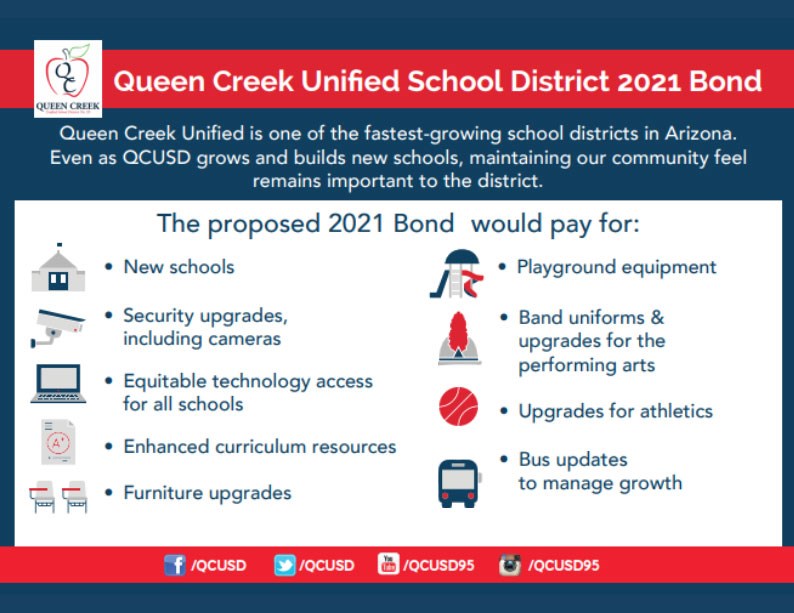As results continue to come in to the Maricopa County Recorder's Office this week, it's certain that voters in the Queen Creek Unified School District No. 95 have failed to approve a bond of up to $286 million requested by the school board.
Updated results as of this morning show 11,763 ballots cast (25.85 percent) in the mail-in only Nov. 2 election, 7,025 (60 percent) voted against the bond, while 4,733 (40 percent) voted in favor of the school district's request.
"I want to thank all of the residents, business partners, elected officials and community members who showed support for a quality K-12 educational system," said Dr. Perry Berry, Ed.D., superintendent of the Queen Creek Unified School District. "Even though we lost this election, we will hold our heads up high and move forward in continuing to provide elite level education to the students we serve.
"Moving forward, we will work hard to find creative solutions to the funding challenges and priorities deemed essential," Berry continued. "As you know, our district is one of the fastest-growing districts in the state of Arizona. Past voter-approved bonds have been expended in building new schools, renovation projects, and providing technology and curriculum resources to accommodate the hyper growth."
Berry added that the district is projected to reach a population of 18,000 to 20,000 students within the next 10 years.
"We will continue to work with the local community and state officials to provide for students and families who choose Queen Creek Unified for their educational experience," he said.
The proposed bond measure would have had funds borrowed by the school district with an estimated cost of $444,750,650 to be repaid by a tax on all taxable property in the district that would not exceed 20 years per each issuance of bonds. Funds would have been used for technology infrastructure, security, infrastructure improvements, extracurricular and programming resources, new construction spaces and student transportation. The cost to the owner of a typical home with an assessed value of $250,000 was estimated to be $356.79 per year.



